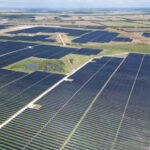Still on energy matters, Scotland’s wind turbines produced electricity equivalent to Scotland’s electricity needs last weekend. The generation was bolstered by strong winds of about 180 Km/hr led to a wide disruption of travel plans across the country. According to data provided by Weather Energy and analysed by WWF Scotland, Scottish wind turbines provided 39,545 megawatt-hours (MWh) of electricity to the national grid on Sunday. Scotland actually needs 37,545 MWh of electricity to power homes and businesses according to the company. This means the turbines generated 106 percent which is in excess of what the country actually needs.
WWF Scotland director Lang Banks told The Guardian that “this major moment was made possible thanks in part to many years of political support, which means that across the year now renewables contribute well over half of our electricity needs.
“However, if we want to ensure we reap the many benefits of becoming a low carbon economy, we need to see this political support for renewables continue.
“We also need the Scottish government’s forthcoming energy strategy to set a goal of securing half of all of our energy, across electricity, heat and transport, from renewables by 2030.
“While it’s not impossible that this has happened in the past, it’s certainly the first time since we began monitoring the data in 2015 that we’ve had all the relevant information to be able to confirm it. However, on the path to a fully renewable future, this certainly marks a significant milestone.”
This won’t be the first time though that wind energy will be making huge contributions to the Scotland’s grid. In January this year, Treehugger reported that wind turbines generated enough electricity to meet the needs of 97% of Scottish households last year, up 16% from the year before. Meanwhile solar also soared, providing 50% or more of the household electricity or hot water needs during a total of seven months of the year.
In May, Scotland’s £2.6b/$3.4b/1.3tr Naira offshore wind farm project got the nod and this makes the country of the biggest players in the wind energy league.
While wind speeds across many African nations are considerably lower at this time of the year, wind speeds offshore on Lagos and other coastal cities across West Africa can still benefit from this technology but a better focus in my opinion would be on solar which we talked about yesterday. Sometimes you have to power the turbines with diesel generators which defeats the whole purpose speaking of Africa which is rich in sunlight.
Discover more from TechBooky
Subscribe to get the latest posts sent to your email.







